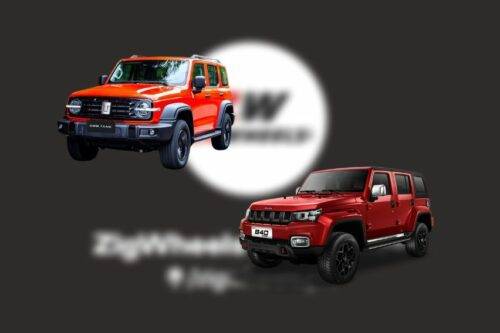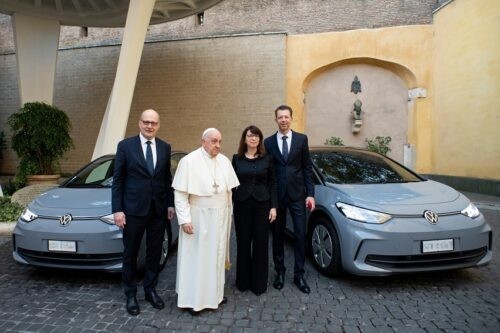Volkswagen unveils refreshed logo

MANILA: Volkswagen has revealed a revamped and digital-friendly re-imagination of its signature logo through one of the most significant rebranding initiatives in the world, and this new design has been introduced in the US market.

Last year, there were approximately 6.2 million vehicles manufactured globally that have the “VW” symbol on their grilles. The two letters have been fused for several years, and the logo has been a representation of one of the most popular automobile brands in the world.
Founded by the German government in 1937, Volkswagen Group or Volkswagen AG is one of the well-known manufacturers of iconic automobiles in the world. It was established in Wolfsburg, Germany, for the mass production of a cost-efficient “people’s car.”
The Volkswagen Group today is composed of 12 signature brands that originated from seven countries in Europe. These brands include MAN, Scania, Vokswagen Commercial Vehicles, Ducati, Porsche, Lamborghini, Bugatti, Bentley, SKODA, SEAT, Audi, and, of course Volkswagen passenger cars. Moreover, the Volkswagen group provides a broad range of financial services, which include fleet management, insurance, and banking activities, leasing, and customer and dealer financing.
The Volkswagen Group also established the “Together-Strategy 2025” future program, which aims to promote the realignment of one of the best automakers in the world to become a global leader and provider of stable mobility. To attain this, the company will be converting its automobile core business and will be introducing 30-plus purely electric cars by 2025, among others. One of the goals of the future program of Volkswagen is to expand in terms of autonomous driving and battery technology as anew significant competencies.
In terms of the Volkswagen signature emblem, the three-dimensional effect that was present in the old logo is already non-existent in the new version. When it is displayed on a flat screen or printed on paper, the new logo looks flat since it has no shadows or highlights.
The new logo also has a narrower stroke for the letters V and W, as well as for the circular band that compresses them. There is a definite separation over the circle between the V and the W, as the W appears to be floating. Furthermore, the new design is a minimalist and revitalized take on the old logo as it permits greater versatility and flexibility in terms of the signature symbol.
Generally, the new logo appears to be lighter and less voluminous. It is a simpler and more modern version of the old logo, which has served as the identity of the brand for more than 70 years.
The redesigned logo also carries other notable changes to the Volkswagen brand, as well as its marketing approach. The colors of the logo have been replaced with a modern deep blue tone, bringing six various white and blue color schemes for a livelier promotional campaign.
Through the leadership of Volkswagen chief designer Klaus Bischoff, the new logo was designed to be flexible, acquiring the “digital-first” concept, and features a reduction of the previous logo to essential components, making it two-dimensional in appearance.
Volkswagen is not the only automaker to embrace the “digital-first” concept. BMW also went through a similar process when it thinned out, flattened, and lightened its iconic round emblem the previous month. Nissan also did the same thing.
The rebranding also transports Volkswagen to the digital age. It alters the classic logo into a symbol that can be digitally displayed on various applications and devices such as a smartwatch home screen, a phone, or a production facility marquee. One of the primary reasons why this specific change on the logo is necessary is to ensure that the VW branding remains versatile.
According to the Volkswagen Group, the new two-dimensional logo will roll out in 154 countries, 171 markets, and 10,000 dealers worldwide by the middle of 2020. The rollout will also involve the transition of more than 70,000 logos globally.
Jochen Sengpiehl, the chief marketing officer of the Volkswagen Group, points out that the brand places greater emphasis on genuine storytelling in all of its marketing channels. This is a strategy that the company hopes will focus more on the colorful history of Volkswagen in the US and globally. This approach will also aid the brand in engaging with its past, even though it leaves behind the logo that has been present in its vehicles for several decades.
Also read: Volkswagen Kombi celebrates 70th anniversary
Sell your car at the best price
 Verified and genuine buyers
Verified and genuine buyers
Volkswagen Car Models
PIMS 2024
Trending & Fresh Updates
- Latest
- Popular
You might also be interested in
- News
- Featured Stories
Volkswagen Featured Cars
- Popular
Latest Volkswagen Car Videos on Zigwheels

Volkswagen Car Articles From Carmudi
- journal





















































